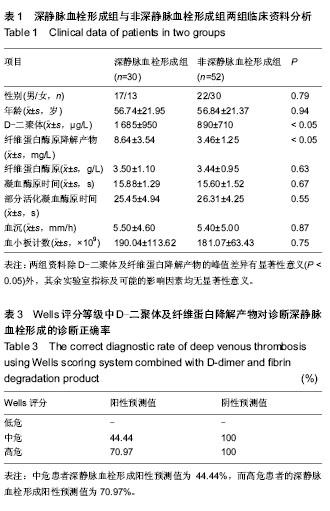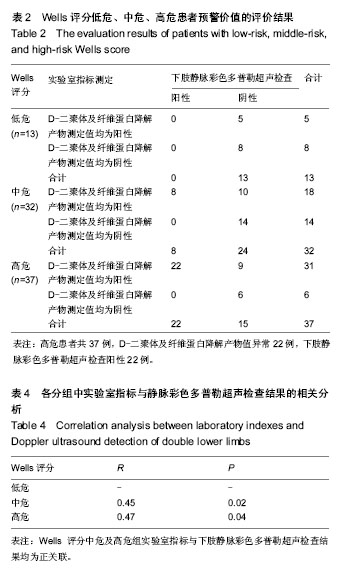| [1] Azarbal A, Rowell S, Lewis J, et al. Duplex ultrasound screening detects high rates of deep vein thromboses in critically ill trauma patients. Journal of vascular surgery. 2011; 54(3):743-747; discussion 7-8.
[2] Geerts WH, Pineo GF, Heit JA, et al.Prevention of venous thromboembolism: the Seventh ACCP Conference on Antithrombotic and Thrombolytic Therapy. Chest. 2004;126(3 Suppl):338S-400S.
[3] Knudson MM, Morabito D, Paiement GD, et al. Use of low molecular weight heparin in preventing thromboembolism in trauma patients. J Trauma. 1996;41(3):446-459.
[4] Stawicki SP, Grossman MD, Cipolla J, et al.Deep venous thrombosis and pulmonary embolism in trauma patients: an overstatement of the problem? The American surgeon. 2005; 71(5):387-391.
[5] Geerts WH, Bergqvist D, Pineo GF, et al. Prevention of venous thromboembolism: American College of Chest Physicians Evidence-Based Clinical Practice Guidelines (8th Edition). Chest. 2008;133(6 Suppl):381S-453S.
[6] Velmahos GC, Kern J, Chan LS, et al. Prevention of venous thromboembolism after injury: an evidence-based report--part II: analysis of risk factors and evaluation of the role of vena caval filters.J Trauma. 2000;49(1):140-144.
[7] Beyer J, Schellong S.Deep vein thrombosis: Current diagnostic strategy. Eur J Intern Med. 2005;16(4):238-246.
[8] Ljungqvist M,Soderberg M,Moritz P,et al.Evaluation of Wells score and repeated D-dimer in diagnosing venous thromboembolism. Eur J Intern Med. 2008;19(4):285-288.
[9] Robert-Ebadi H, Le Gal G,Carrier M, et al. Differences in clinical presentation of pulmonary embolism in women and men. Journal of thrombosis and haemostasis.JTH. 2010;8(4): 693-698.
[10] Wells PS, Anderson DR, Rodger M, et al.Excluding pulmonary embolism at the bedside without diagnostic imaging: management of patients with suspected pulmonary embolism presenting to the emergency department by using a simple clinical model and d-dimer. Annals of internal medicine. 2001;135(2):98-107.
[11] Goodacre S,Sampson F,Stevenson M,et al.Measurement of the clinical and cost-effectiveness of non-invasive diagnostic testing strategies for deep vein thrombosis. Health technology assessment. 2006;10(15):1-168, iii-iv.
[12] Dempfle CE, Zips S, Ergul H, et al. The fibrin assay comparison trial (FACT): correlation of soluble fibrin assays with D-dimer. Thrombosis and haemostasis. 2001;86(5): 1204-1209.
[13] Nieuwenhuizen W.A reference material for harmonisation of D-dimer assays. Fibrinogen Subcommittee of the Scientific and Standardization Committee of the International Society of Thrombosis and Haemostasis.Thrombosis and haemostasis. 1997;77(5):1031-1033.
[14] Bradley M, Bladon J, Barker H.D-dimer assay for deep vein thrombosis: its role with colour Doppler sonography.Clinical radiology.2000;55(7):525-527.
[15] Hiltunen S,Putaala J,Haapaniemi E,et al.D-dimer and clinicoradiologic features in cerebral venous thrombosis. J Neurol Sci. 2013;327(1-2):12-14.
[16] Crassard I, Soria C, Tzourio C, et al. A negative D-dimer assay does not rule out cerebral venous thrombosis: a series of seventy-three patients. Stroke. 2005 ;36(8):1716-1719.
[17] Wada H, Sakuragawa N, Shiku H. Hemostatic molecular markers before onset of disseminated intravascular coagulation in leukemic patients. Semin Thromb Hemost. 1998;24(3):293-297.
[18] Minamikawa K, Wada H, Wakita Y, et al. Increased activated protein C-protein C inhibitor complex levels in patients with pulmonary embolism. Thrombosis and haemostasis. 1994; 71(2):192-194.
[19] Tanigawa M, Wada H, Minamikawa K, et al. Decreased protein C inhibitor after percutaneous transluminal coronary angioplasty in patients with acute myocardial infarction. Am J Hematol. 1995;49(1):1-5.
[20] Novielli N, Cooper NJ, Abrams KR, et al. How is evidence on test performance synthesized for economic decision models of diagnostic tests? A systematic appraisal of Health Technology Assessments in the UK since 1997. Value Health. 2010;13(8):952-957.
[21] Novielli N,Sutton AJ,Cooper NJ.Meta-analysis of the accuracy of two diagnostic tests used in combination: application to the ddimer test and the wells score for the diagnosis of deep vein thrombosis. Value Health. 2013;16(4):619-628. |

